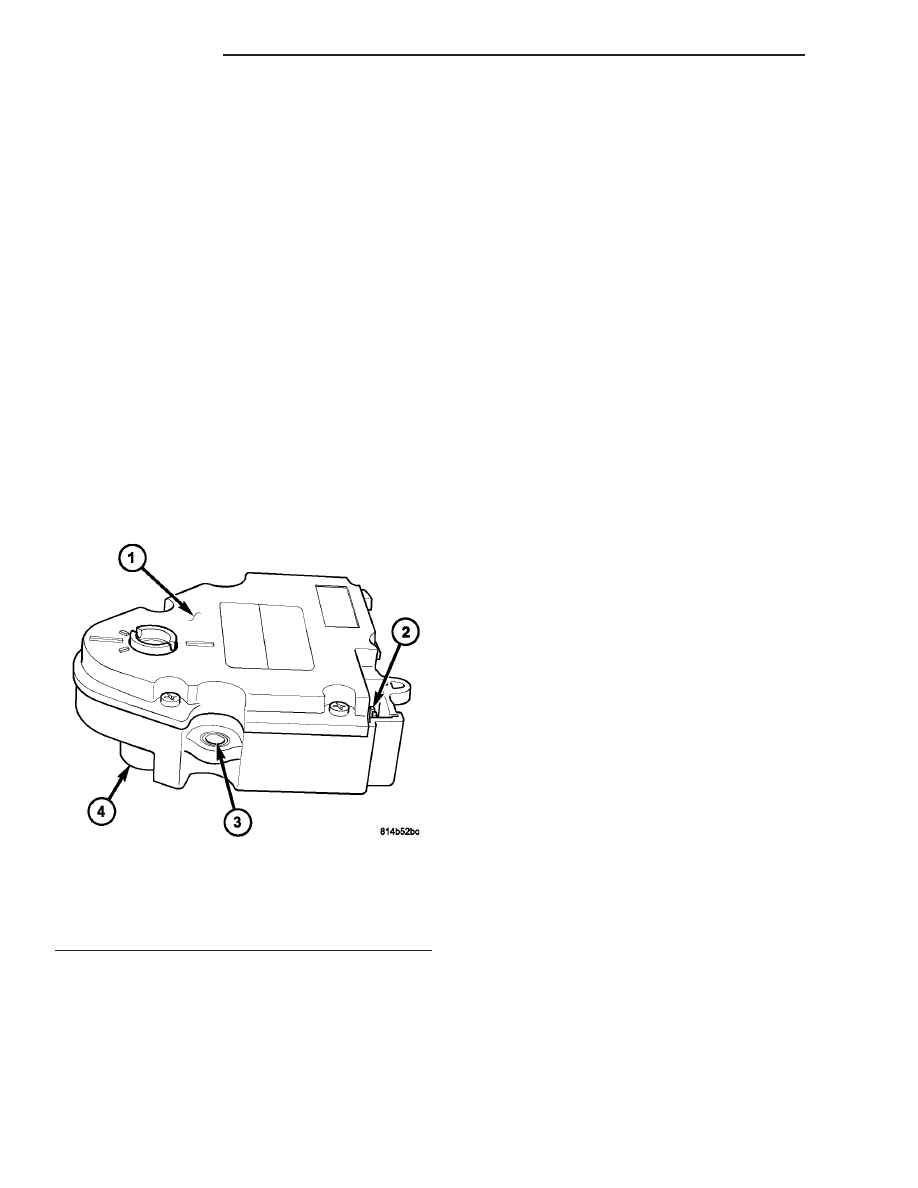Jeep Wrangler TJ. Manual - part 590

(3) Connect the wire harness connector to the A/C
pressure transducer.
(4) Reconnect the negative battery cable.
BLEND DOOR ACTUATOR
DESCRIPTION
The blend door actuator is a reversible, 12-volt
direct current (DC), servo motor which mechanically
positions the blend-air door (Fig. 22). The blend door
actuator is located on the bottom of the HVAC hous-
ing.
The blend door actuator is contained within a
black molded plastic housing with an integral wire
connector receptacle. The actuator also has an output
shaft that connects it to the mode door linkage and
three integral mounting tabs that allow it to be
secured to the HVAC housing. The blend door actua-
tor requires mechanical indexing to the blend door
linkage.
The blend door actuator can be accessed for service
from under the instrument panel.
OPERATION
The blend door actuator is connected to the A/C-
heater control through the vehicle electrical system
by a dedicated three-wire lead and connector of the
HVAC wire harness. The blend door actuator can
move the blend-air door in two directions. A potenti-
ometer within the actuator allows the A/C-heater
control to know the exact position of the blend-air
door at all times.
The blend door actuator can be diagnosed using a
DRBIII
t scan tool. Refer to Body Diagnostic Proce-
dures for more information.
The blend door actuator cannot be adjusted or
repaired and, if faulty or damaged, it must be
replaced.
REMOVAL
WARNING: On vehicles equipped with airbags, dis-
able the airbag system before attempting any steer-
ing wheel, steering column, or instrument panel
component diagnosis or service. Disconnect and
isolate the negative battery (ground) cable, then
wait two minutes for the airbag system capacitor to
discharge before performing further diagnosis or
service. This is the only sure way to disable the air-
bag system. Failure to take the proper precautions
could result in accidental airbag deployment and
possible personal injury or death.
NOTE: Prior to performing this procedure, turn the
ignition key to the On position and set the A/C-
heater control in the mid-temperature position and
wait 10 seconds.
(1) Disconnect and isolate the negative battery
cable.
(2) Disconnect the wire harness connector from the
blend door actuator located at the bottom of the
HVAC housing (Fig. 23).
(3) Remove the three screws that secure the blend
door actuator to the HVAC housing and remove the
actuator.
Fig. 22 Blend Door Actuator
1 - BLEND DOOR ACTUATOR
2 - WIRE CONNECTOR RECEPTACLE
3 - MOUNTING TAB (3)
4 - ACTUATOR OUTPUT SHAFT
24 - 26
CONTROLS
TJ
A/C PRESSURE TRANSDUCER (Continued)